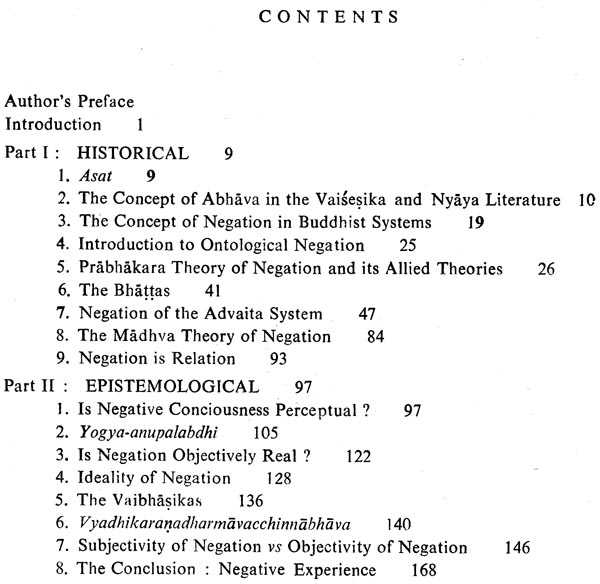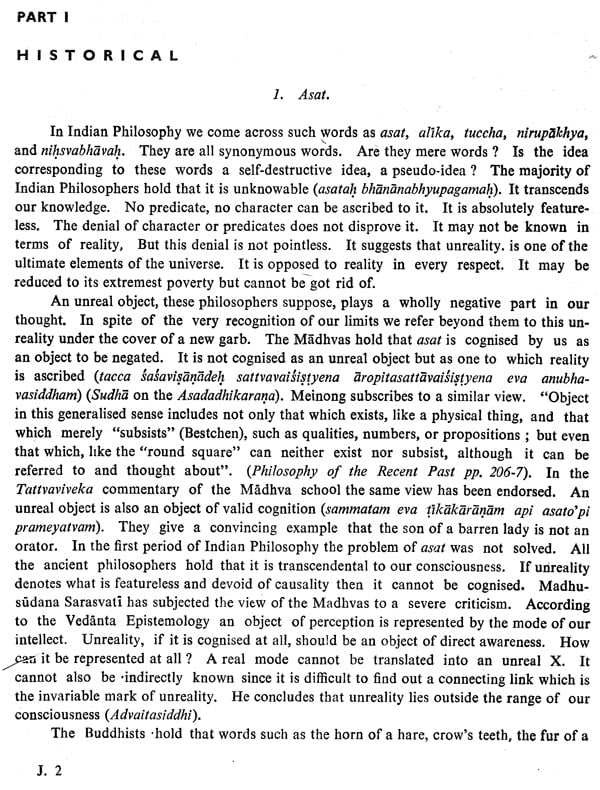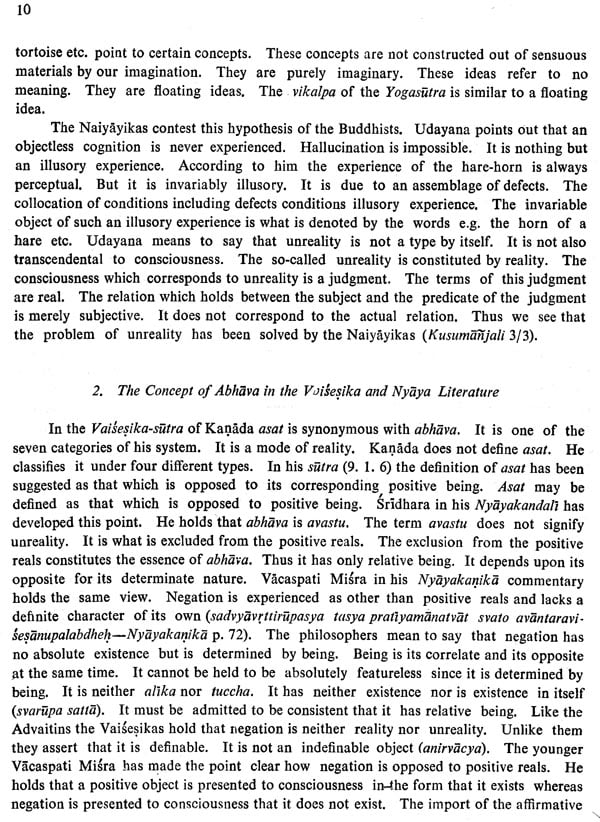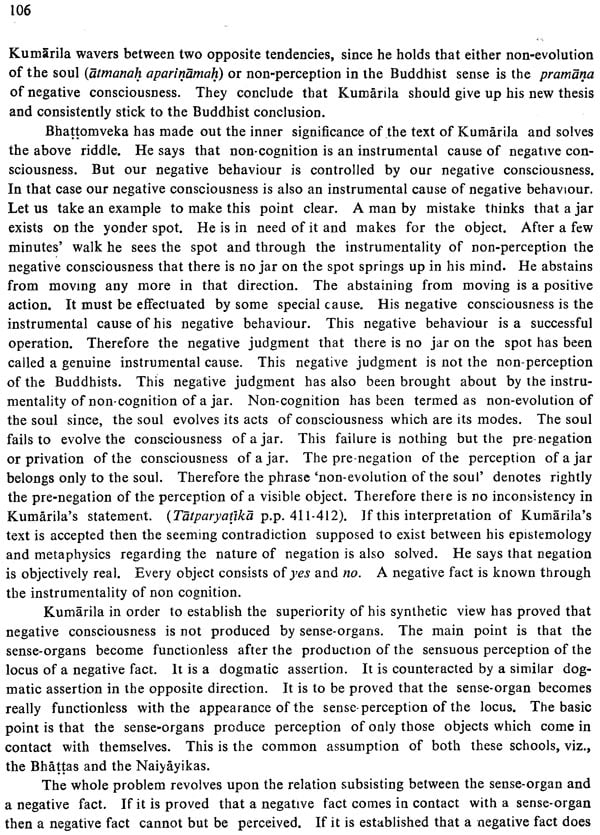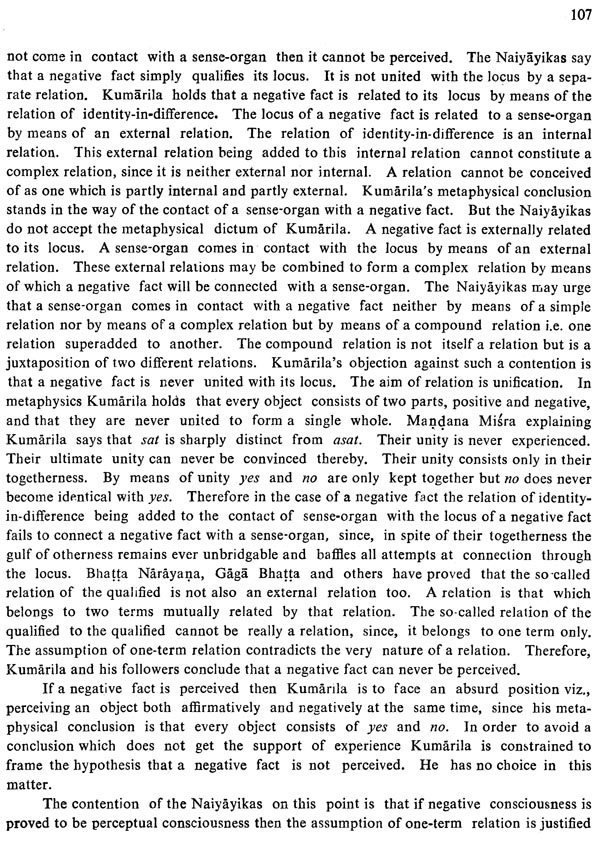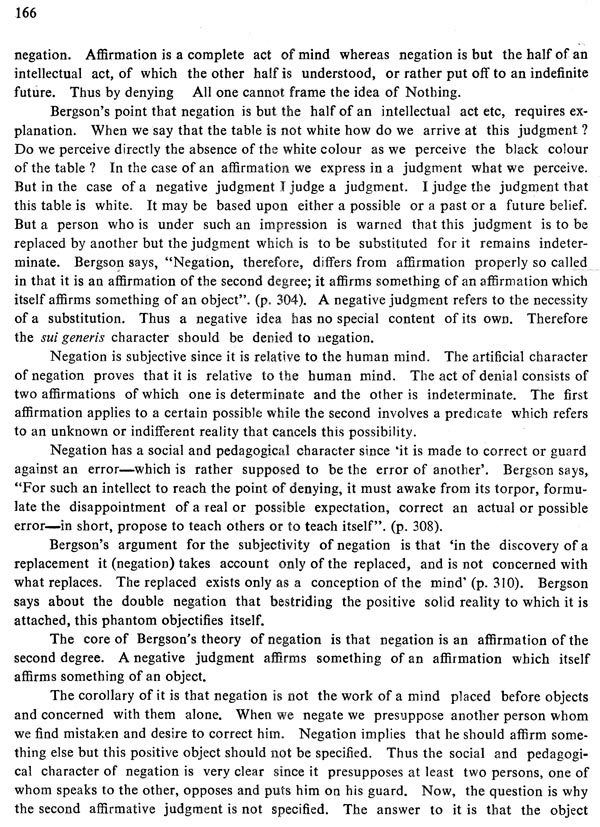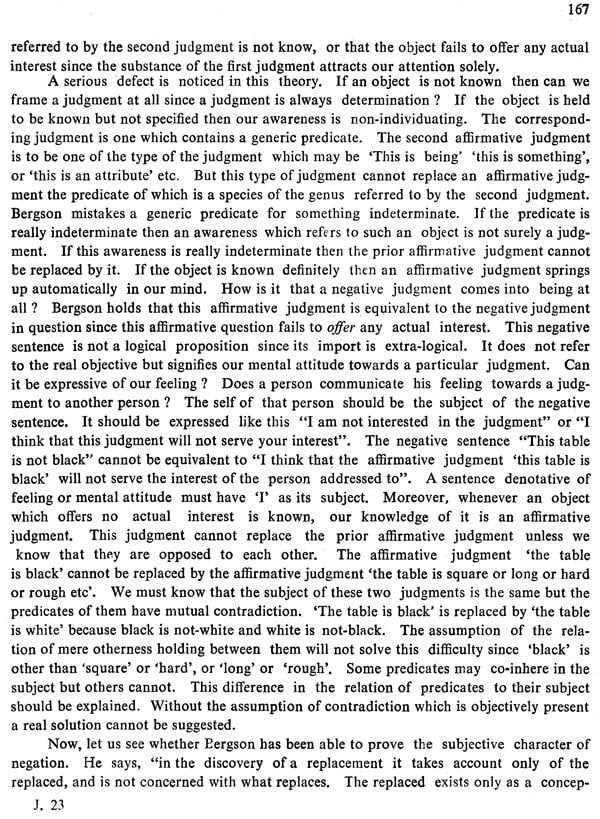
Negation (An Old and Rare Book)
Book Specification
| Item Code: | NZW386 |
| Author: | Janaki Ballabha Bhattacharyya |
| Publisher: | Indian Studies Past and Present |
| Language: | ENGLISH |
| Edition: | 1965 |
| Pages: | 167 |
| Cover: | HARDCOVER |
| Other Details | 10.00 X 7.50 inch |
| Weight | 460 gm |
Book Description
I beg to be excused at the very outset for the delay in publishing my thesis which was completed long ago. The simple reason for this is that the publication of the book was beyond the reach of my financial capacity. I have made several desparate attempts at publishing it. But chill penury has always frozen the current of my zeal. In the post-war period commercial motive gets the upperhand of the publishers who always think in terms of good return of their investment. Academic interest is at a discount. The press of the University of Calcutta is overworked. A book undertaken by it for publication may or may not see the light during the life-time of the author. Consequently, I have had to wait for an opportunity.
After years of patient waiting I have fortunately found in Professor Debiprasad Chattopadhyaya a great friend and patron of learning. He has gladly undertaken the publication of 'Negation' out of his largeness of heart. I shall remain ever indebted to him.
The book under publication does not embody my personal views on the subject under discussion. It reflects the Nya.ya-Vaigesika point of view. The problem of negation has been discussed from the logical stand-point. There is wide scope of discussing the problem frbm philosophical and other points of view also. I have not also discussed the bearing of the law of contradiction on the body of Law nor evaluated its importance and utility therein.
I have not made an improvement upon my thesis since it was adjudicated by the great savants of learning.
I am also grateful to Professor Chattopadhyaya and to my student Professor Mrinal K anti Gangopadhyaya for the pains they have taken in seeing the book through the press.
I shall fail in my duty if I do not acknowledge my indebtedness to my parents. I cannot express in so many words the load of debt to my father. I used to sit at his feet to learn the A B C of Indian Logic and Philosophy. I remember with gratitude his ungrudgingly constant help to me whenever asked. My beloved late mother always protected me during the period of crisis by stretching the wings of her affection like a bird. I cannot but recall the great services rendered to me by late Professor Dr. P. N. Banerjea who kept an eye on me like a father and always encouraged me to complete my work. I shall never be able to repay their debts.
I express my gratefullness to my teachers who have kindled the spirit of research in me.
I also owe much to my late uncle Pandit Kumud Chandra Vidyabinoda due to whose constant encouragement this book took its final shape.
I shall offer an explanation at the outset why the problem of negation has been selected for discussion. It is one of those problems the solution of which gives a definite shape to a system of thought. H. Bergson says about the idea of the nought thus, 'And yet it is often the hidden spring, the invisible mover of philosophical thinking.' Hegel holds that negativity is the soul of the universe. We all experience that change signifies the coming into being and passing away of an object. The problem of change is a meta-physical problem par excellence. We are to explain why an object comes into being at all and passes away. With this problem, the problem of negation is connected. The Naiyayikas hold that before the creation of an effect an effect does not exist in its cause and that it is a new beginning. The doctrine of the new beginning of an effect presup-poses pre-nonexistence of the effect in its cause. The pre-negation of an effect determines why a particular inherent cause produces a particular effect to the exclusion of others. It stands between the inherent cause and its effect. It seems like a hyphen which touches a particular word but without touching another word connects the second word with the first one. This pre-nonexistence is related to the:inherent cause by one relation, to the effect by another relation. It is determined by the effect only i.e. its opposite. Though it is related to the effect yet it is opposed to it at the same time. The pre-nonexistence of an effect and the effect do not co-exist in the inherent cause at the same time. The appearance of an effect synchronises with the destruction of its pre-nonexistence. Thus the pre-nonexistence of an effect is not a relation, though it discharges the function of a connecting link. The gap between the pre-nonexistence of an effect and the appearance of an effect is infinitely small. The Vaigesikas hold that the pre-nonexistence of effect is objectively real. They further hold that it is directly perceived. This preception is, of course, a determinate perception. They established the validity of such perception. According to their epistemological theory perception points to reality which is beyond the act of perception. The perceptual judgment that a jar will come into being points to the pre-nonexistence of an individual jar. Thus is also implied that it (the pre-nonexistence of a jar) is objectively real.
Similarly, when an object passes away it does not return to its inherent cause. It leaves a negative counterpart behind it. It is called the post-negation of an object. All objects of this universe do not pass away. Our experience only determines which objects pass away. The post-negation is also perceived by us. Our true experience of the post-negation is expressed in the form that the destruction of an object has now come into being. Thus an effect is prefixed by pre-nonexistence and suffixed by post-negation. Pre-nonexistence is beginningless and post-negation is endless. These two individual negations which precede and follow an effect suggest unfailingly the short duration of an effect to which they are related. The atyanta-abhava of an object is the negation of an object in its relational character. An effect which inheres in its inherent cause does not inhere in some other cause. Therefore the absolute negation of an effect' points to its spatial limitation. It is also objectively real. The perceptual judgment that a jar does not inhere in the ground points to its objective reality. The pre-nonexistence and the post-negation of an effect are not identical with the effect itself. They too are not identical with the inherent cause of the effect. The absolute negation of an effect is not identical with its own locus. In the above example of absolute negation, the negation of a jar is not identical with its inherent cause. An effect is perceived to be different from its inherent cause. The perception of difference is expressed in the form A is not B. This judgment is opposed to the judgment A is B. If the negative judgment is valid then it suggests that A and B are never identical. The implication of this categorical negative judgment is that the difference between these two terms is absolute. The Vaigesikas hold that the difference is eternal. The difference of an effect from its cause is perceived by us directly. This difference of an effect is explained by its pre-negation, post-negation and its absolute negation. The evidence of the perception of difference of an effect from its cause is corroborated by the evidence of the acts of perception of other forms of its nega-tion i.e., pre-nonexistence, post-negation and absolute negation. Let us take a concrete example to illustrate the above point. A jar is an effect. Clay-substance is its inherent cause. A jar is different from clay-substance. We have direct experience of this differ-ence. This difference is not logical but real. The reality of it is also proved by the per-ceptions of the pre-nonexistence, the post-negation and the absolute negation of a jar as inhering in clay-substance. A jar is opposed to its pre-negation and post-negation. The clay-substance, the inherent cause of a jar, contains its pre-negation and post-negation. A jar inheres in the clay-substance. But the clay-substance does not inhere in itself. A jar does not inhere in the inherent cause of the clay-substance but inheres in the clay-substance. Thus it is clear that the difference of a jar from its inherent cause is explained by the three other forms of its negation. These four types of negation are an interconnec-ted system of negation in the effect world. They all point to the important doctrine of the Vaigesikas that an effect is really different from its cause. Thus they explain change by means of their theory of negation. The name asat is synonymous with abhava in Ka i;ada's Sutras.
In the ontological sphere Kanada holds that pre-negation and post-negation do not play an important part. Pre-negation and post-negation do not explain difference. Let us take an example. An earthly dyad consists of two earth atoms. These two atoms are different from each other. But both of them contain the pre-negation and the post-negation of the above dyad since it inheres in both of them. The absolute negation of the effect i.e. the dyad does not explain their difference. Kanada has tried to explain everything ontological and phenomenal. Therefore, Kanada has postulated the category of Wes(' (exclusive particularity) in order to explain the mutual exclusion of two atoms. The assumption of vigesa has conferred ontological status on the absolute negation.
**Contents and Sample Pages**
